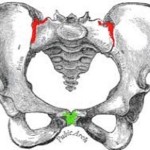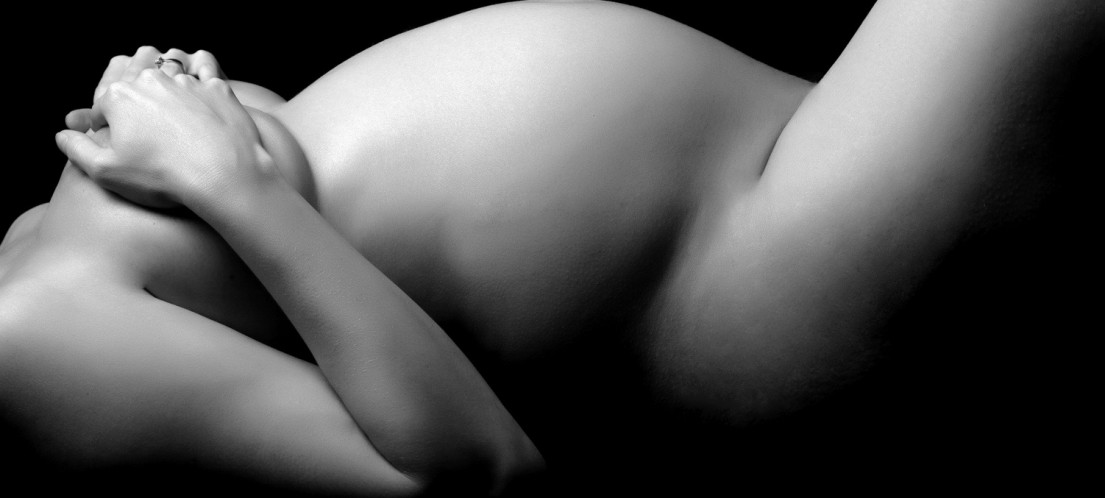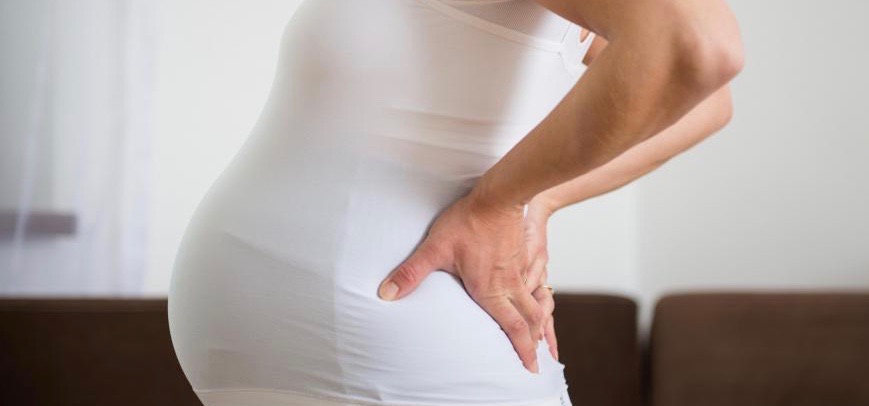Back Pain and Pregnancy
Pregnancy is not an illness but it certainly causes a few changes to which mums to be and then mums will have to adapt, some of these are simply mechanical and others are not
Many women experience back pain during pregnancy, studies show that between 50% and 80% of pregnant women suffer from low back pain
This may be back ache due to the alteration of muscular support needed to accommodate the changing loads and the reduced ability of the body to support those loads, which of course is worse if there is already a demanding toddler around! This could range from a bit of back ache to spells of disabling pain however in this sense pregnancy could lead to the sort of backache that occurs after, for example, too much gardening and are dealt with elsewhere on this site.
There are some symptom patterns which are considered to be particularly associated with pregnancy this is called Pelvic Girdle Pain (PGP).
Pelvic Girdle Pain (PGP)
PGP in pregnancy is almost certainly mechanical in all cases and just like mechanical lower back pain which makes up 97% of all back pain definitive diagnosis is both difficult and pointless as in most cases it does not change the treatment plan.
At The Spine Team we try to take a pragmatic approach at dealing with each individual and considering what particularly may be the reason for why they are suffering this mechanical failure leading to pain and what both can actually be done to help and how they can help themselves.
Early referral to a specialised health practitioner is appropriate particularly if symptoms start in the early phase of pregnancy and the key to successful management is early diagnosis, education and a supportive approach.
Do remember that it is still important to have a multidisciplinary approach involving the GP, midwife and the birthing team especially if the PGP symptoms persist.
Below Annette Williams discusses Pelvic Girdle Pain and what can be done about it
What is PGP and how common is it?
 Back pain during pregnancy is common affecting between 50% and 80% (1, 2), and is most often diagnosed as Pelvic Girdle Pain (PGP) which describes pain that is experienced in the front and/or back of your pelvis. Previous history of back pain and age play a role in the likelihood of developing back pain during pregnancy, especially between 5th-7th month, although it may start as early as 12 weeks.
Back pain during pregnancy is common affecting between 50% and 80% (1, 2), and is most often diagnosed as Pelvic Girdle Pain (PGP) which describes pain that is experienced in the front and/or back of your pelvis. Previous history of back pain and age play a role in the likelihood of developing back pain during pregnancy, especially between 5th-7th month, although it may start as early as 12 weeks.
A proportion of women suffering from PGP will have severe pain that may persist well into the postpartum period, possibly resulting in disability and with the danger of becoming chronic and inherently more difficult to resolve.
When does PGP start?
The pain usually starts during later pregnancy although it may start in the first trimester. A common misconception is that PGP is a phenomenon of pregnancy alone and that it will spontaneously resolve once the baby is born. This is rarely the case (3).
What causes PGP?
Factors thought to contribute to the onset of PGP include the pregnancy related hormone ‘Relaxin’ and its effect on the pelvic joints, the pubic symphysis (at the front of the pelvis – in green) and/or the sacroiliac joints (either side of the back of the pelvis – in red), the postural changes and alteration to the centre of gravity that come with pregnancy, changes to the way your muscles work to support the pelvic joints and pelvic joint dysfunction.
However, as not all pregnant women develop PGP, it appears that these factors only become important in susceptible individuals. PGP onset can be sudden, usually brought on following an episode of trauma, such as a fall, or a movement that puts strain on the pelvic joints but in some the onset is after the pelvic strain of childbirth itself. Incidence also appears to be increased in pluriparous pregnancies and in women operating under high levels of stress at work.
Other factors, such as contraceptive pill use, interval since last pregnancy, height, weight and smoking status, have been shown not to affect the risk of developing PGP.
What are the symptoms of PGP?
There is a wide range of symptoms, and in some women these will be much worse than in others. The hallmark of PGP is persistent pain felt within the pelvis. It may be felt in the pubic symphysis and/or the sacroiliac joints and often radiates to the groin, the lower abdomen or the upper thigh.
Pain is often worse with excessive movement or with prolonged periods of sitting or standing and further exacerbated by carrying or pushing a heavy load. Normal activities, such as dressing, washing and moving in bed are painful.
PGP often has a high psychosocial impact, potentially putting strain on the woman’s relationship with both the partner and the new baby.
How is PGP diagnosed?
A comprehensive case history, a thorough static and dynamic examination of the pelvis, posture and observing your gait will be done and provides information about possible causative, contributing and maintaining factors.
The diagnostic process must ascertain whether there is a musculoskeletal component to the pain and whether conservative Chiropractic treatment is both safe and likely to give a good outcome. There are some conditions which may not be suitable for Chiropractic treatment, in these cases you will be referred to your GP.
Is it treatable?
YES! and the key to successful treatment and management is an early diagnosis, education and an empathetic and supportive approach. Probably the single most important part of any treatment programme is better understanding on behalf of the patient, this includes reassurance that the condition is both real and understood and equally that the pain suffered does not mean harm is being done, in almost all cases doing more improves prognosis but the right advice is essential and what we are looking for is a happier pregnancy and early motherhood.
Early referral to a specialised health practitioner is appropriate particularly if symptoms start in the early phase of pregnancy and the key to successful management is early diagnosis, education and a supportive approach (4).
Treatment of PGP is divided into Passive and Active care
Passive care involves a ‘hands-on’ manual therapy (joint mobilisation, stretching, acupuncture and massage) from a physiotherapist, osteopath or chiropractor.
Active care involves exercise, such as encouraging maintenance of fitness as much as possible, use of proper ergonomics, heat and cold therapy, relaxation exercises, rest as needed, patient education on avoiding aggravating factors and encouraging relieving activities,
Pain medications can be discussed but this will relate to the timing of the treatment as obviously medication options during pregnancy is limited (6).
PGP how can I help myself ?
Be careful during everyday activities. You should avoid standing or sitting for too long and it would be advisable to sleep with a pillow between the knees.
Stay active but avoid too much exertion or twisting and always make sure movement is within the limits of pain.
Use a pelvic support belt for short periods and particularly when you are exercising to give relief from pain during and after the exercise.
 Exercises, especially for your tummy, pelvic girdle, hip and pelvic floor muscles, aim to improve the stability of your pelvis and back. Gym-type exercises in water can be helpful.
Exercises, especially for your tummy, pelvic girdle, hip and pelvic floor muscles, aim to improve the stability of your pelvis and back. Gym-type exercises in water can be helpful.
Do have restful periods as well.
How will PGP affect me?
For most women, PGP resolves with treatment, a change of lifestyle with better understanding and time but for a few it can last months or years with ongoing impact on daily life.
Recent statistics suggest that 45 per cent of all pregnant women and 25 per cent of all women postpartum experience PGP. Of these, 25 per cent suffer severe pain during pregnancy, with severe disability found in 8 per cent. After pregnancy, serious problems persist in only 7 per cent. (4, 5). . Recovery can take up to two years.
REFERENCES:
- Perkins J, Hammer RL, Loubert PV. Identification and management of pregnancy-related low back pain. J Nurs Midwifery 1998;43:331-40
- Berg G, Hammar M, Moller-Nielsen J, Linden U, Thorblad J.Low back pain during pregnancy. Obstet Gynecol 1988;71:71-5.
- Stapleton DB, MacLennan AH, Kristiansson P. The prevalence of recalled low back pain during and after pregnancy: a SouthAustralian population survey. Aust N Z J Obstet Gynaecol 2002;43:482-5
- Wleeming A, Alber H B, Ostgaard H C , Sturesson B and Stuge B. European guidelines for the diagnosis and treatment of pelvic girdle pain. Eur Spine J. 2008 Jun; 17(6): 794–819
- Skaggs CD, Prather H, Gross G, George JW, Thompson PA, Nelson DM. Back and pelvic pain in an underserved United States pregnant population: a preliminary descriptive survey. J Manipulative Physiol Ther 2007;30:130-4.
- Pennick VE, Young G. Interventions for preventing and treating pelvic and back pain in pregnancy. (Perkins J, Hammer RL, Loubert PV. Identification and management of pregnancy-related low back pain. J Nurs Midwifery 1998;43:331-40)




